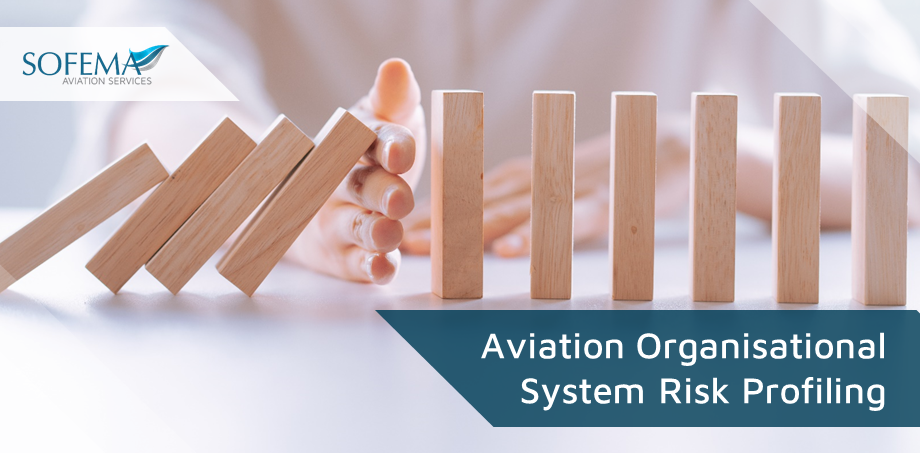Sofema Aviation Services (SAS) www.sassofia.com considers the elements involved in performing risk profiling of an Aviation Business System or Process.
Introduction – What is Risk Profiling?
Risk profiling is a process that helps organizations identify and assess the risks they face. In aviation, risk profiling is critical to identify and manage the risks associated with various aspects of aviation operations.
Aviation organizational system risk profiling should be a comprehensive approach to identifying, evaluating, and mitigating risks associated with aviation organizational systems. By completing the following steps, aviation organizations can develop a comprehensive approach to risk profiling that helps them to manage risks effectively and improve their safety performance.
The following steps can be used to perform aviation organizational system risk profiling:
- Step 1: Identify the Organizational Systems
o The first step in aviation organizational system risk profiling is to identify the organizational systems.
o Organizational systems are the different aspects of aviation operations that are critical to the functioning of the aviation organization.
o These systems can include the safety management system, quality management system, maintenance management system, training management system, etc.
- Step 2: Identify the Risks
o Once the organizational systems have been identified, the next step is to identify the risks associated with each system.
o Risks can arise from various sources such as operational, technical, environmental, legal, financial, or social.
o To identify the risks, the aviation organization should carry out a risk assessment process.
o This process can include reviewing historical safety data, conducting interviews with personnel, conducting safety audits, etc.
- Step 3: Evaluate the Risks
o After identifying the risks, the aviation organization should evaluate the risks to determine their likelihood and potential impact.
o The evaluation can be carried out using a risk matrix that assigns a score to each risk based on its likelihood and potential impact.
o The risk matrix can be customized based on the aviation organization’s specific needs and requirements.
- Step 4: Prioritize the Risks
o Once the risks have been evaluated, the aviation organization should prioritize the risks based on their level of severity.
o The prioritization process can be carried out by ranking the risks based on their risk score or by using a risk tolerance threshold.
o This step helps the aviation organization to focus on the most critical risks that require immediate attention.
- Step 5: Develop Risk Mitigation Strategies
o The next step in aviation organizational system risk profiling is to develop risk mitigation strategies for each identified risk.
o Risk mitigation strategies can include implementing new procedures, revising existing procedures, providing additional training, acquiring new equipment, or implementing new technologies.
o The strategies should be designed to reduce the likelihood and potential impact of the risks.
- Step 6: Implement Risk Mitigation Strategies
o After developing the risk mitigation strategies, the aviation organization should implement them.
o The implementation process can include communicating the strategies to personnel, providing necessary training, allocating resources, monitoring the implementation process, and evaluating the effectiveness of the strategies.
- Step 7: Monitor and Review
o The final step in aviation organizational system risk profiling is to monitor and review the effectiveness of the risk mitigation strategies.
o The aviation organization should regularly monitor the implementation of the strategies and evaluate their effectiveness.
o The monitoring process can include conducting safety audits, reviewing safety data, conducting risk assessments, etc.
o The aviation organization should also review the risk profiling process regularly to ensure that it is up-to-date and aligned with the organization’s objectives.
Next Steps
Follow this link to our Library to find & Download related documents for Free.
Sofema Aviation Services (www.sassofia.com) and Sofema Online (www.sofemaonline.com) provide Classroom, Webinar & Online Training of EASA Regulatory Compliant and Vocational Training Courses. If you have any questions, please email us at team@sassofia.com
Tags:
Aircraft, aviation, Aviation Organisational System, Aviation Risk, Aviation Safety System Risk Profiling, Compliance, EASA, Risk Mitigation, SAS blogs, Sofema Aviation Services




